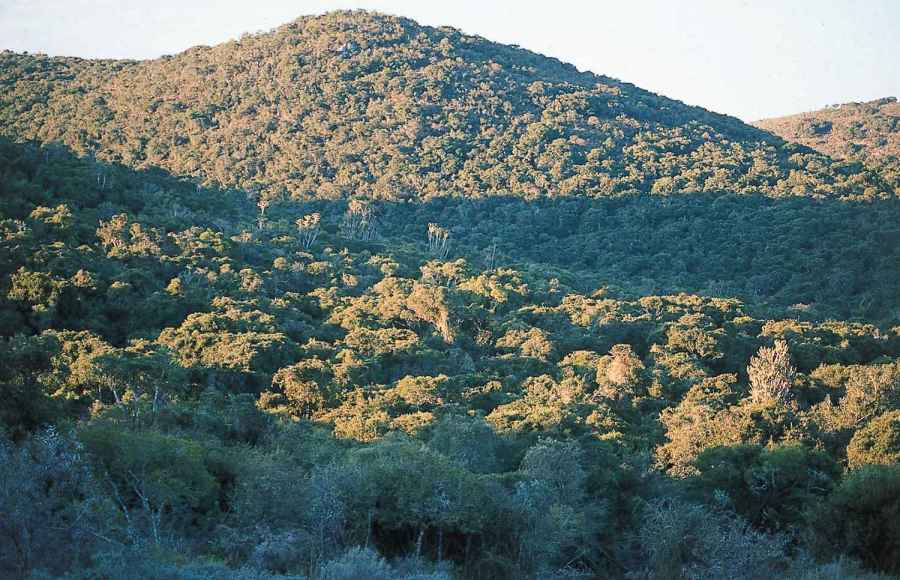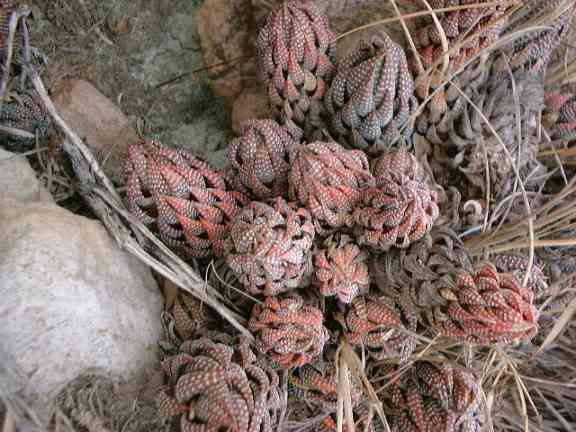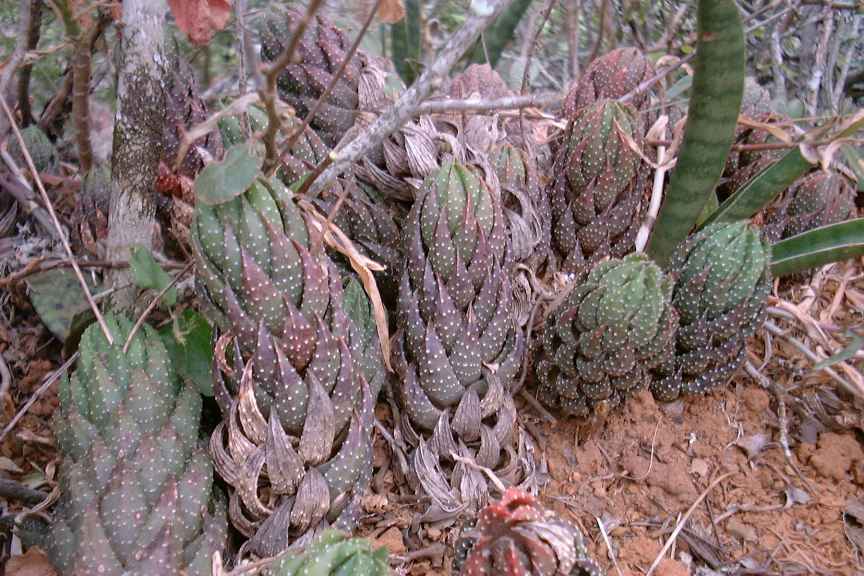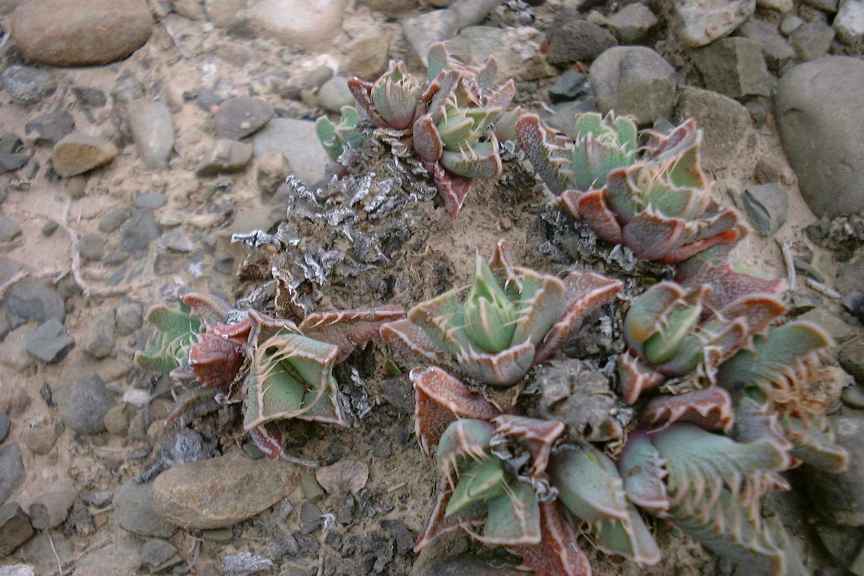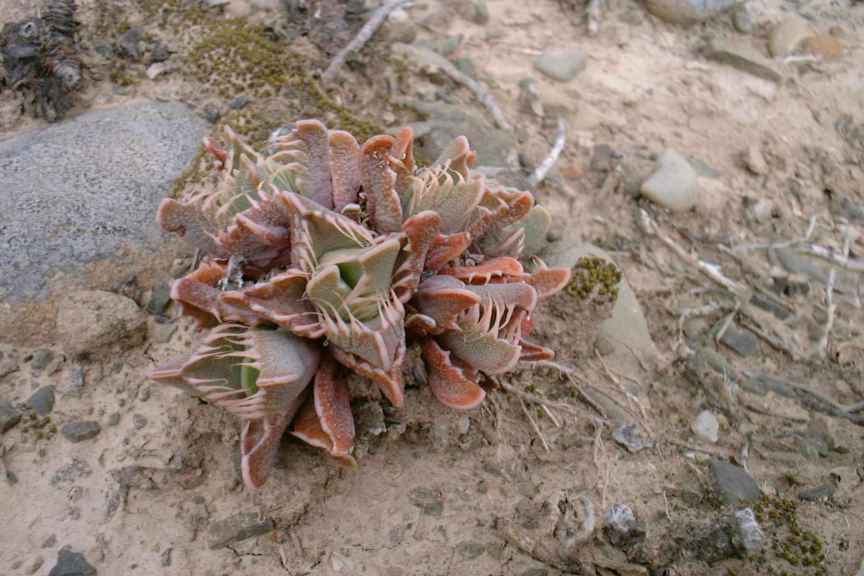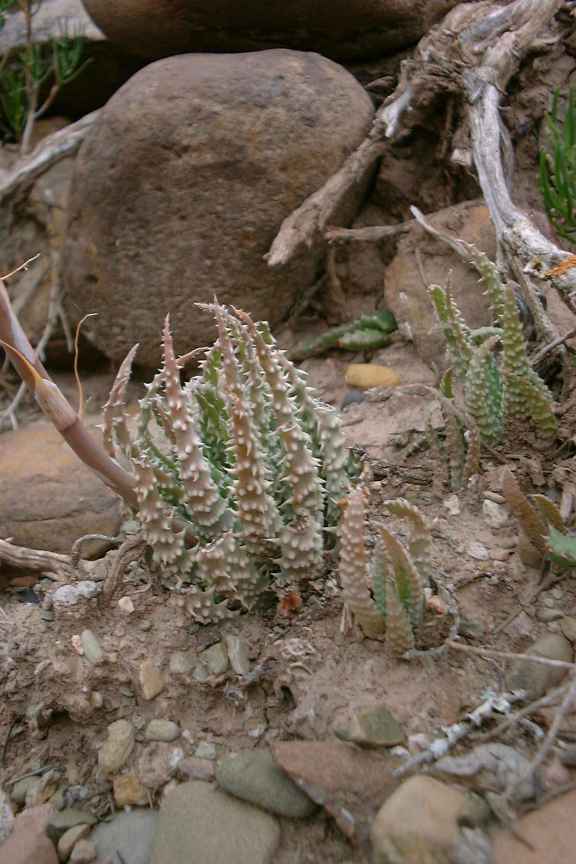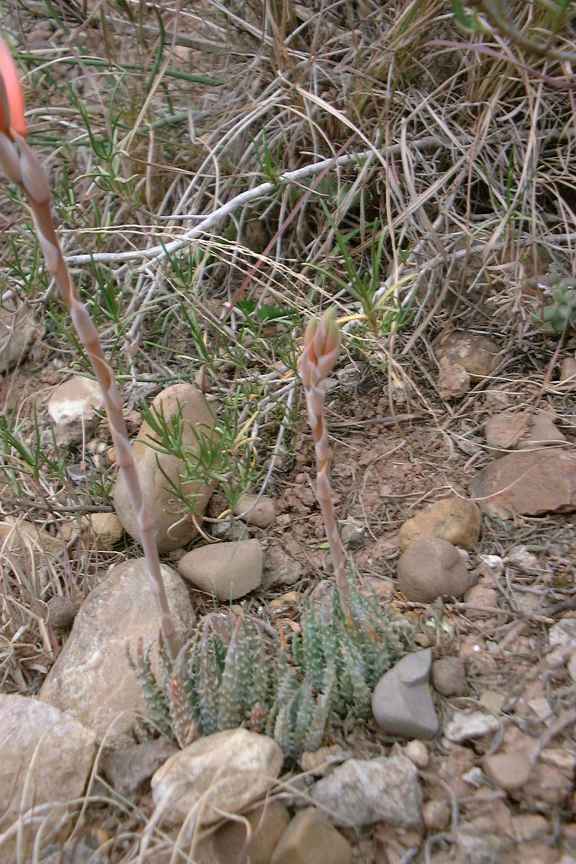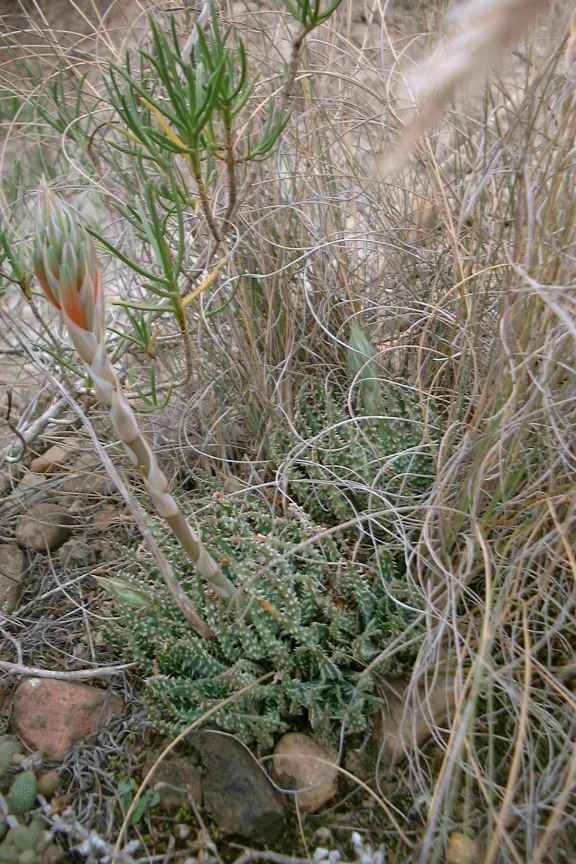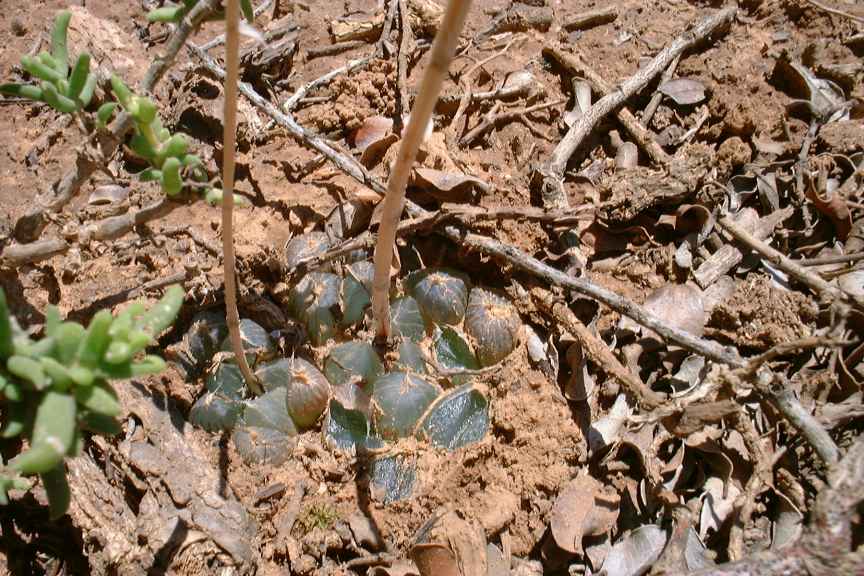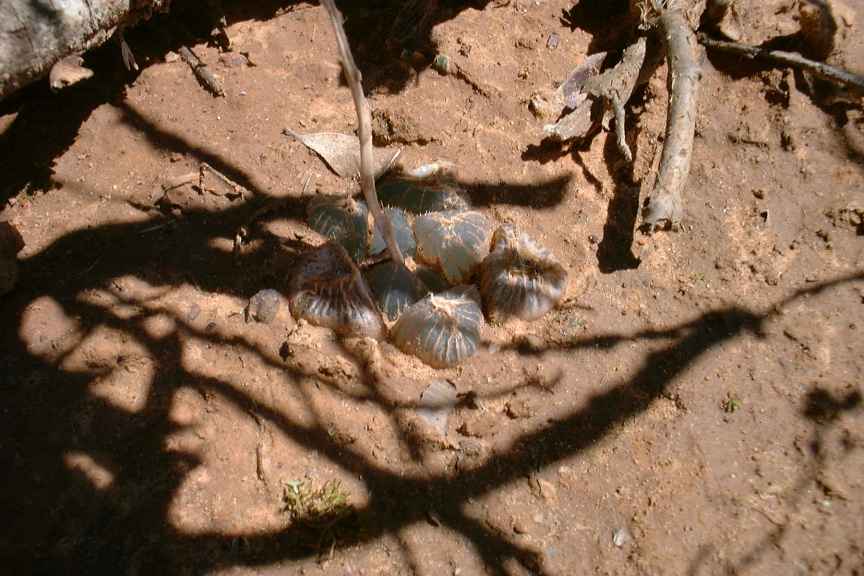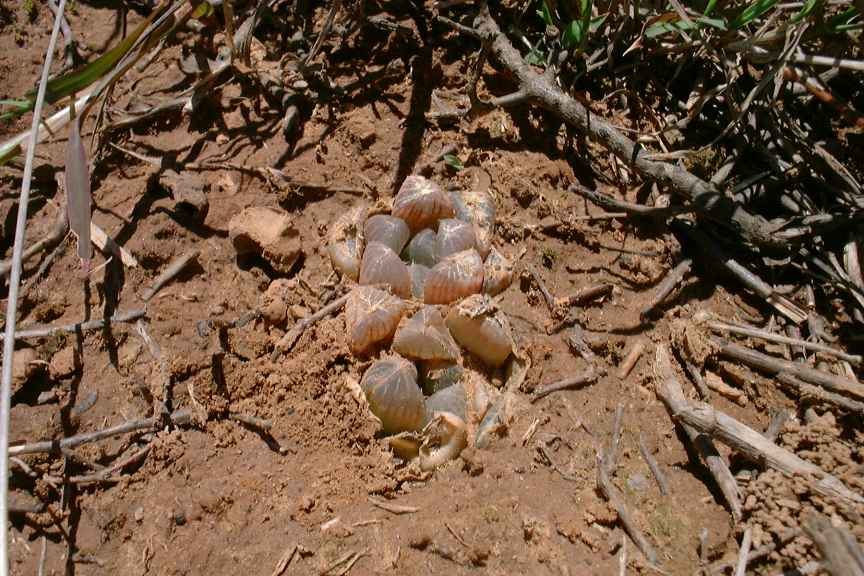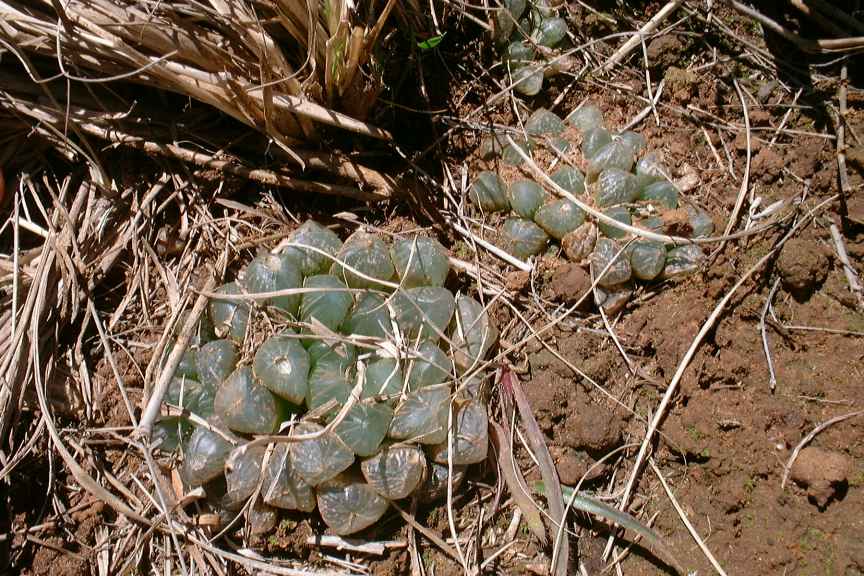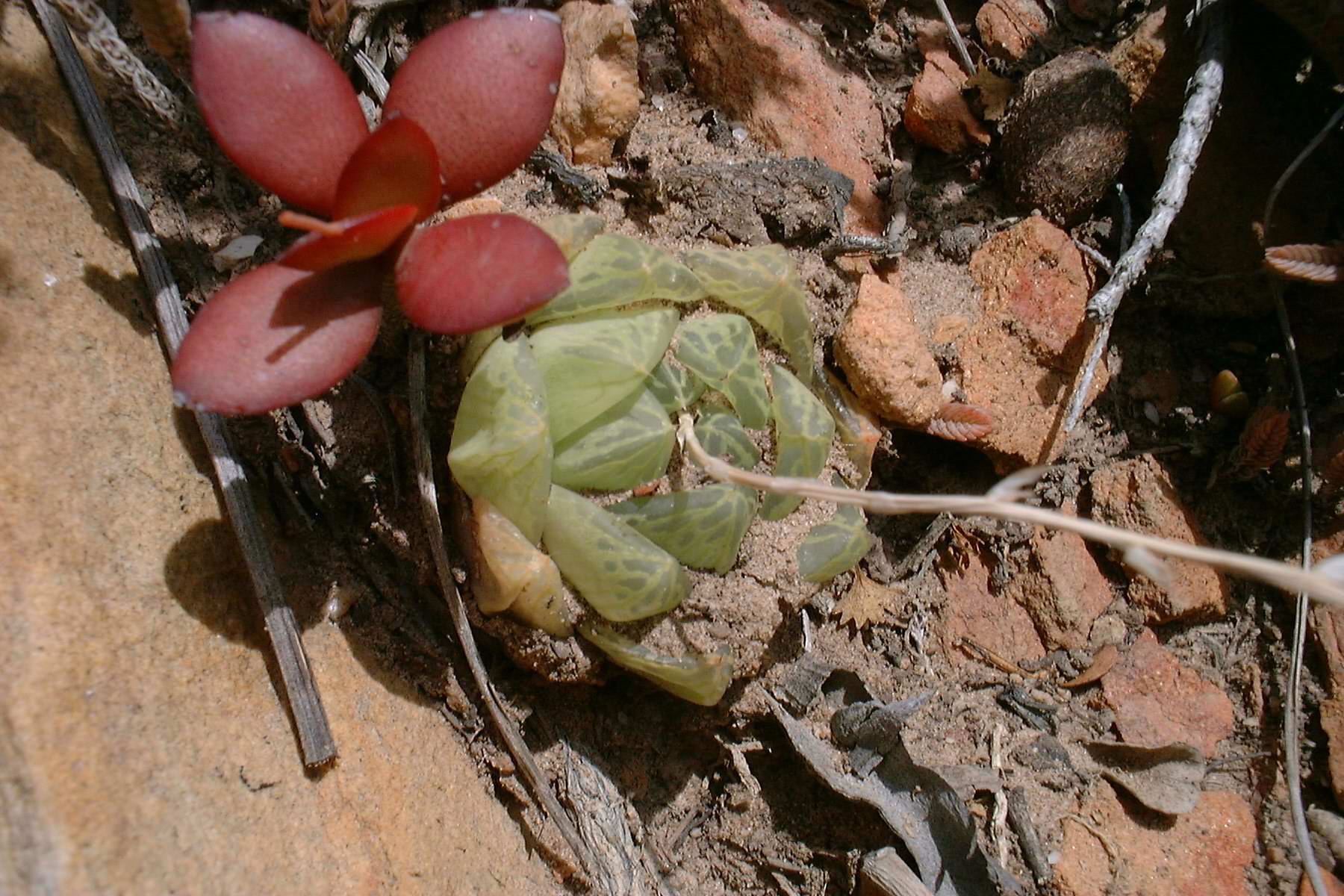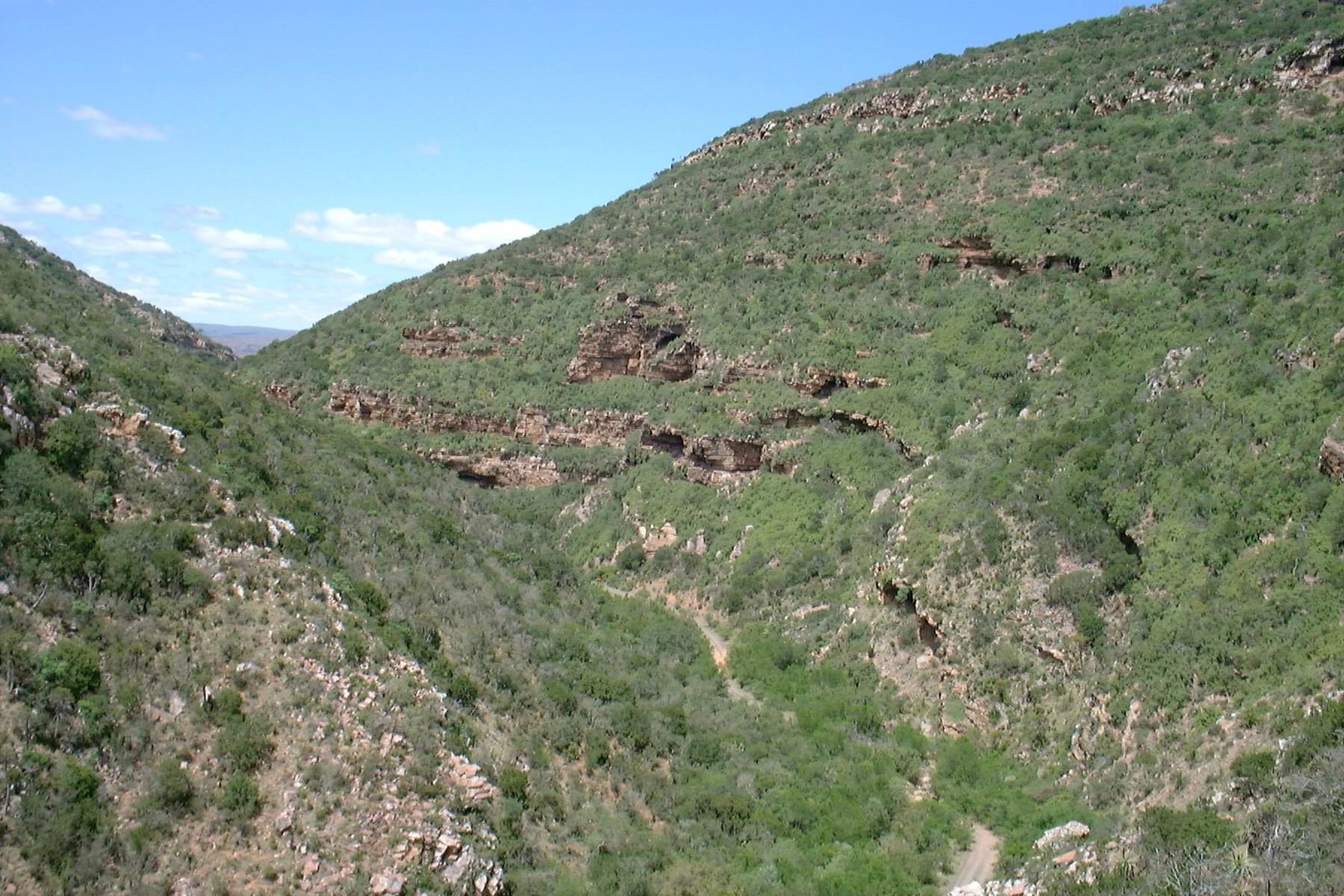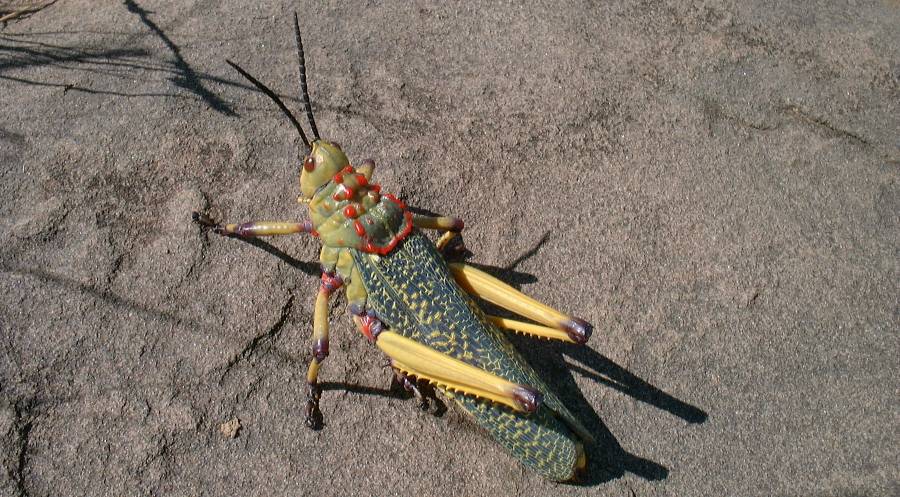My 3rd trip to the Port Elizabeth – Grahamstown area in 2000 started with a visit to Hannelie van der Merwe and her Shamwari Succulents.
Some Shamwari Succulents
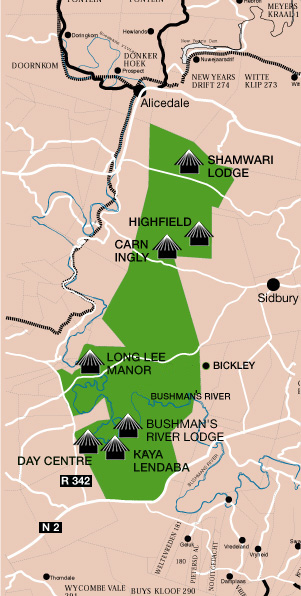 Most people go to Shamwari to view the game or relax in luxury. I went hunting succulent plants. The Shamwari Game Reserve is located at the western end of the Eastern Cape province of South Africa between Port Elizabeth and Grahamstown just northeast of the N2 and N10 junction, an easy hour’s drive from the Port Elizabeth airport. The reserve is quite large at 45,000 acres or some 70 square miles.
Most people go to Shamwari to view the game or relax in luxury. I went hunting succulent plants. The Shamwari Game Reserve is located at the western end of the Eastern Cape province of South Africa between Port Elizabeth and Grahamstown just northeast of the N2 and N10 junction, an easy hour’s drive from the Port Elizabeth airport. The reserve is quite large at 45,000 acres or some 70 square miles.
I met Hannelie van der Merwe first through email after having posted a notice on one of the on-line plant discussion groups asking for suggestions on places to stay in the Port Elizabeth and Grahamstown area. Hannelie sent me an email and introduced herself andtold me all about where she lives and works, Shamwari. Hannelie is a conservation wildlife assistant for Shamwari’s student wildlife management and education program. In August 2000 I made my way back to South Africa and met Hannelie at Shamwari, she wanted to show me her Shamwari Haworthia! Then in November I visited Hannelie again, this time to look at another Haworthia that she had recently discovered.
So far we’ve botanized four sites in the reserve. In August we took a walk along a dry section of Bushman’s River and up a ridge to find Haworthia coarctata, next we drove to an exposed bank to find Aloe humilis and Faucaria felina. Then in November we went in search of Haworthia cooperi at two sites, one near a water hole, the second high up on a ridge with a wonderful view of the savannah below.
I’m very fortunate to have made such a good friend, very few Shamwari guests get to walk around the reserve.
Haworthia coarctata is a beautiful plant. It is surprising that it’s not found more often in gardens as it can spread slowly and makes nice mats. The name coarctata means ‘leaves pressed together’. This species is found west of the Fish River north of Grahamstown over to near Port Elizabeth. It is often confused with Haworthia reinwardtii which is found further to the east. Coarctata leaves tend to be thicker and less densely packed around the stem. Both species have tubercles on the leaf surfaces. Reinwardtii tubercles tend to be larger, flatter, and whiter than coarctata’s.There is a lot of variation between populations and habitats. Plants from near Salem have many more tubercles. Plants near Howiesonspoort have almost none. Plants in full sun get red and purplish, while plants in deep shade remain green as can be seen here.
Notice the Sansevieria next to the coarctata in the fourth picture below, another interesting Shamwari succulent.
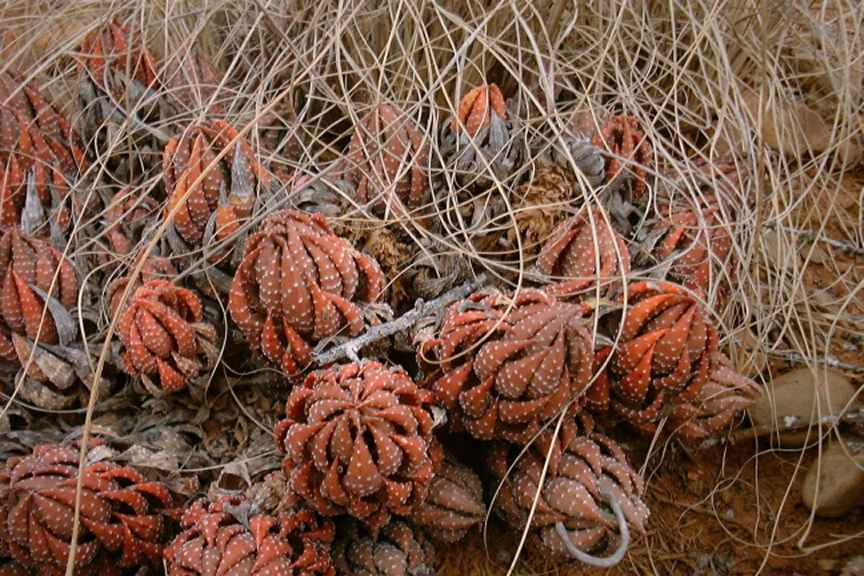
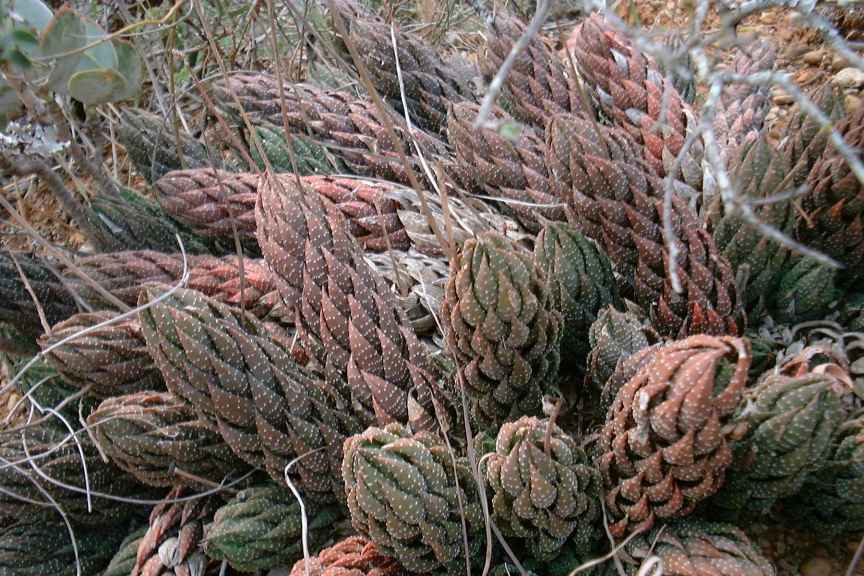
Amongst the numerous genera of the Mesembryanthemum the Faucaria are distinctive and easily recognized. The name Faucaria comes from the Latin faux, meaning ‘jaw’, and faucaria means a collection of jaws. With a little imagination the toothed edges of the opposing leaves give the appearance of an animal’s open jaws. Faucaria felina is one of six varieties and is wide spread in the western parts of Eastern Cape, distributed between Oudtshoorn, Graaff-Reinet, Cradock, Bedford, Grahamstown, and Port Elizabeth. They are found in open Grassland, Karoo and Valley Bushveld vegetation, in generally flat terrain, on north facing foothills, in gravel and sand between stones on slopes.
Aloe humilis is a dwarf aloe widely distributed from Mossel Bay in the west to near Grahamstown in the east, and north to Somerset East and Graff-Reinet. This small aloe is stemless, usually forming clusters with two or three rosettes, and occasionally dense clusters up to 500 mm wide. The leaves are grey-green and up to 100 mm long and 15 mm wide. Both surfaces have soft white spines. The flowers are rather large compared to the size of the plant, and are scarlet or sometimes orange or yellow. Flowering occurs in August and September. The name humilis means ‘low growing’. The plants are found scattered about in small numbers, never in large dense groups as do many other aloe. They grow on flat stony or sandy area or on gentle slopes. They are not easy to spot unless in flower.Despite its wide distribution the species in considered vulnerable due to habitat degradation as a result of over grazing. This species, when not in flower is easily confused with Aloe longistyla which shares about the same geographical distribution. The scientific name longistyla refers to the long style which protrude from the mouth of the flower.
Haworthia cooperi forma pilifera is a cryptic beauty. It is endemic to the Eastern Cape Province, where it grows mainly in short grassland and is sometimes found in open Acacia savanna. In exposed aspects and in dry times of the year the plant pulls itself into the ground, sometime completely hiding itself. Then after the rains come the leaves will plump up and show themselves. These plants are almost impossible to find when not in flower. There are a number of varieties of cooperi; forma cooperi has longer pointed tip leaves, pilifera tend to have round or even flat leaf ends, while forma leightonii forms dense mats, its deeply purplish leaves are long and thin, and forma venusta has coarse white hairs covering its leaves. Cooperi are named for Thomas Cooper, pilifera means ‘with hairs’, referring to a pronounced point on the end of the leaf. Although the plants illustrated here don’t show the leaf hair we did see plants with this characteristic. Plants exposed to direct sun light, like these are, have withered necrotic or truncate leaf tips. The new leaves at the center of the rosette will display the leaf tip hair until the dry times come. Look closely at the pictures and you’ll see some of the hairs.
Given the size and the different ecosystems at Shamwari other Haworthia are likely present; cymbiformis and angustifolia for example.
Nearby is Amakhala Game Reserve and The Cottage at Reed Valley, my favorite place to stay when I’m in the Shamwari area. Rod and Tracy Weeks are great hosts.
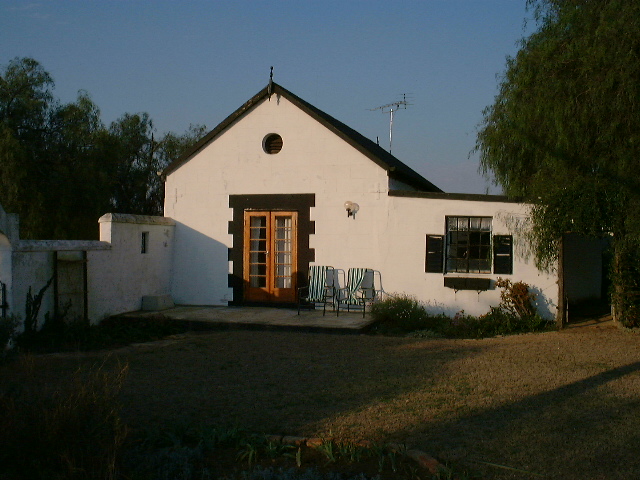
I made a second visit to Swartwaterpoort. This is such a magical place, maybe a kilometer from end to end you could spend weeks there and not see all of it. The climbing is a bit rough.

